Guabao (刈包) – Discovering the Origins of Taiwanese Braised Pork Bun!
February 11, 2018

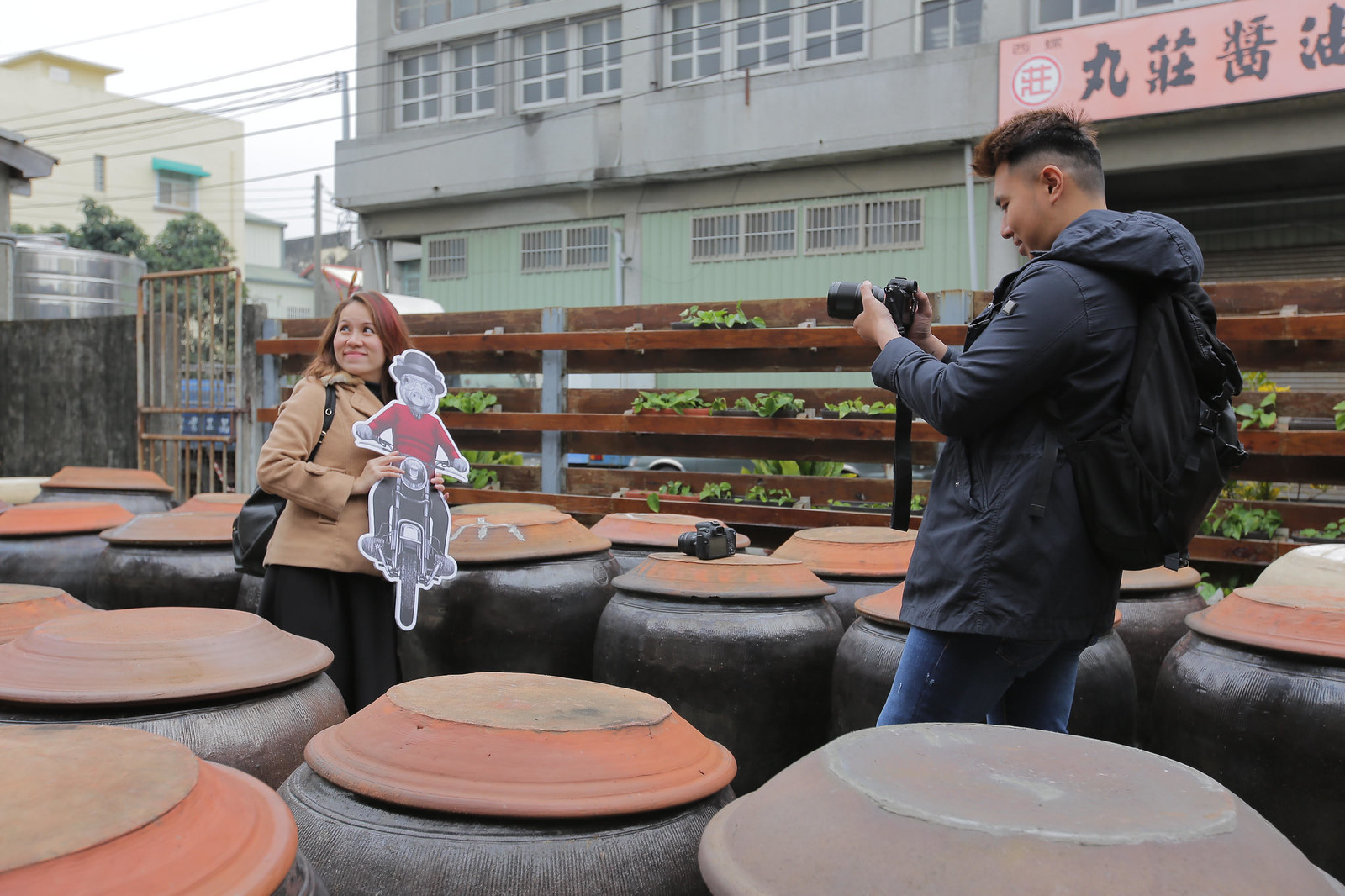
Singaporeans are all familiar with Braised Pork Buns (扣肉包). As simple as it is, there is a unique and rich cultural heritage behind this dish. Well, we are excited to reveal the origins of the braised pork bun! The name Guabao (刈包), or “tiger bites pig”, was first seen in 1927 in a diary of a famous local Taiwanese businessman.
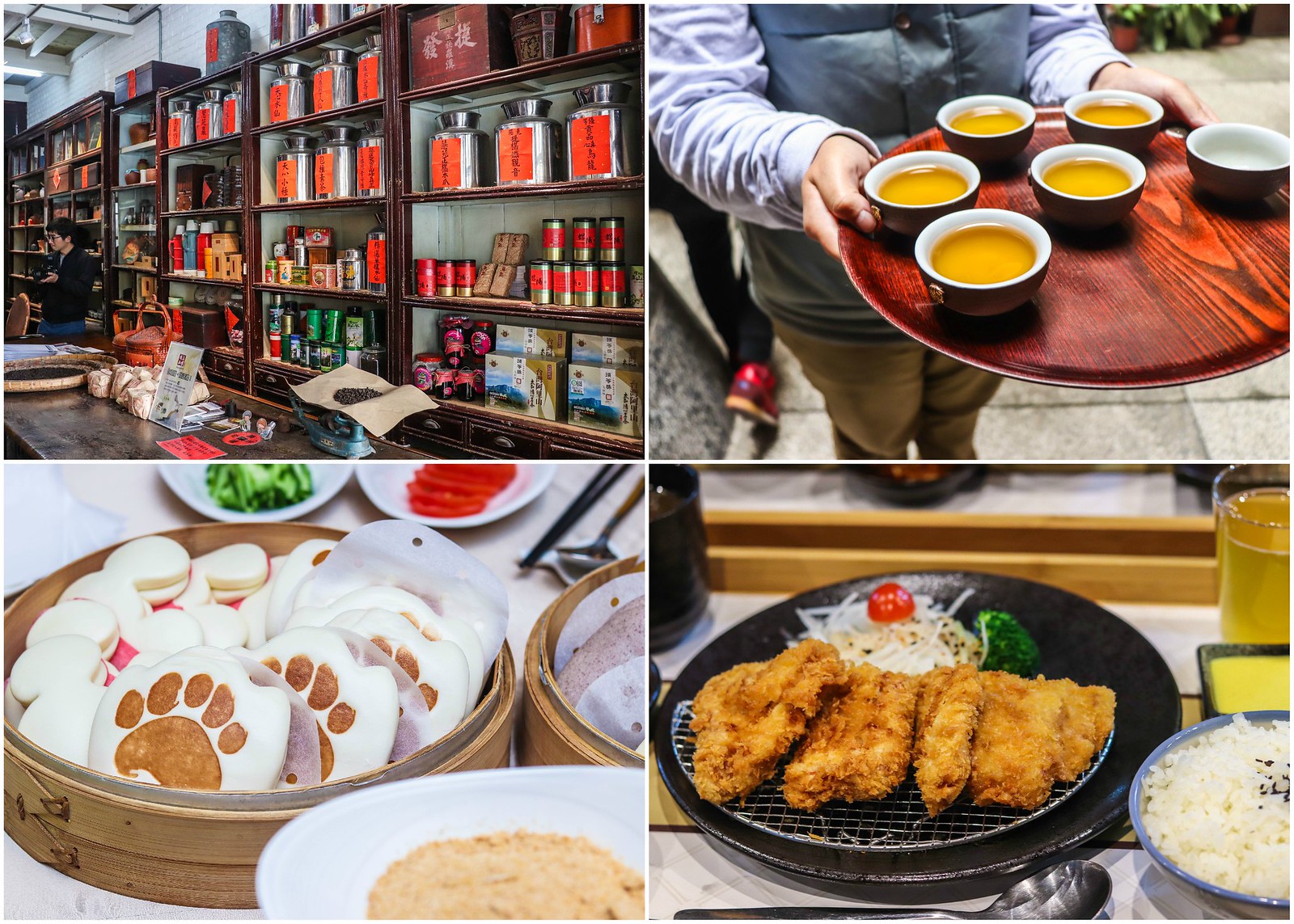
We were hosted by iSee Taiwan Foundation (看見台灣基金會) during our time in Taiwan. As part of a 3-day itinerary, the iSee Taiwan Foundation brought us to Yunlin County (雲林) where most, if not all of the ingredients for Guabao are produced. What better way to experience Taiwan’s distinctive folk character, climate and culture than through the delicious Guabao. Dubbed the “heart of Taiwan”, Yunlin has historically been Taiwan’s poorest region. Today, Yunlin boasts a strong agricultural heritage and land that has been reinvigorated by its residents. Farmland covers almost 90% of the total county land area, giving Yunlin the most agricultural land of any Taiwanese county. Producing almost one-third of ALL Taiwan agricultural produce, Yunlin is proud to call itself the fresh grocer of Taiwan. If you have bought any fruits, vegetables or seafood in Taiwan, chances are that it would have been grown or caught right here in Yunlin!
HIGH SPEED RAIL & YUNLIN COUNTY
iSee Taiwan Foundation ushered our group to the Taiwan High Speed Rail (台灣高鐵), which runs along the west coast of Taiwan from Taipei Main Station in the north all the way to Kaohsiung in the south. Did you know that the High Speed Rail can go up to as fast as 300km/h? The journey to Yunlin now takes only about 1.5 hours when you depart from Taipei Main Station.
Enjoy a railway bento or grab a quick nap on the train!
YUNLIN COUNTY: NEXTLAND
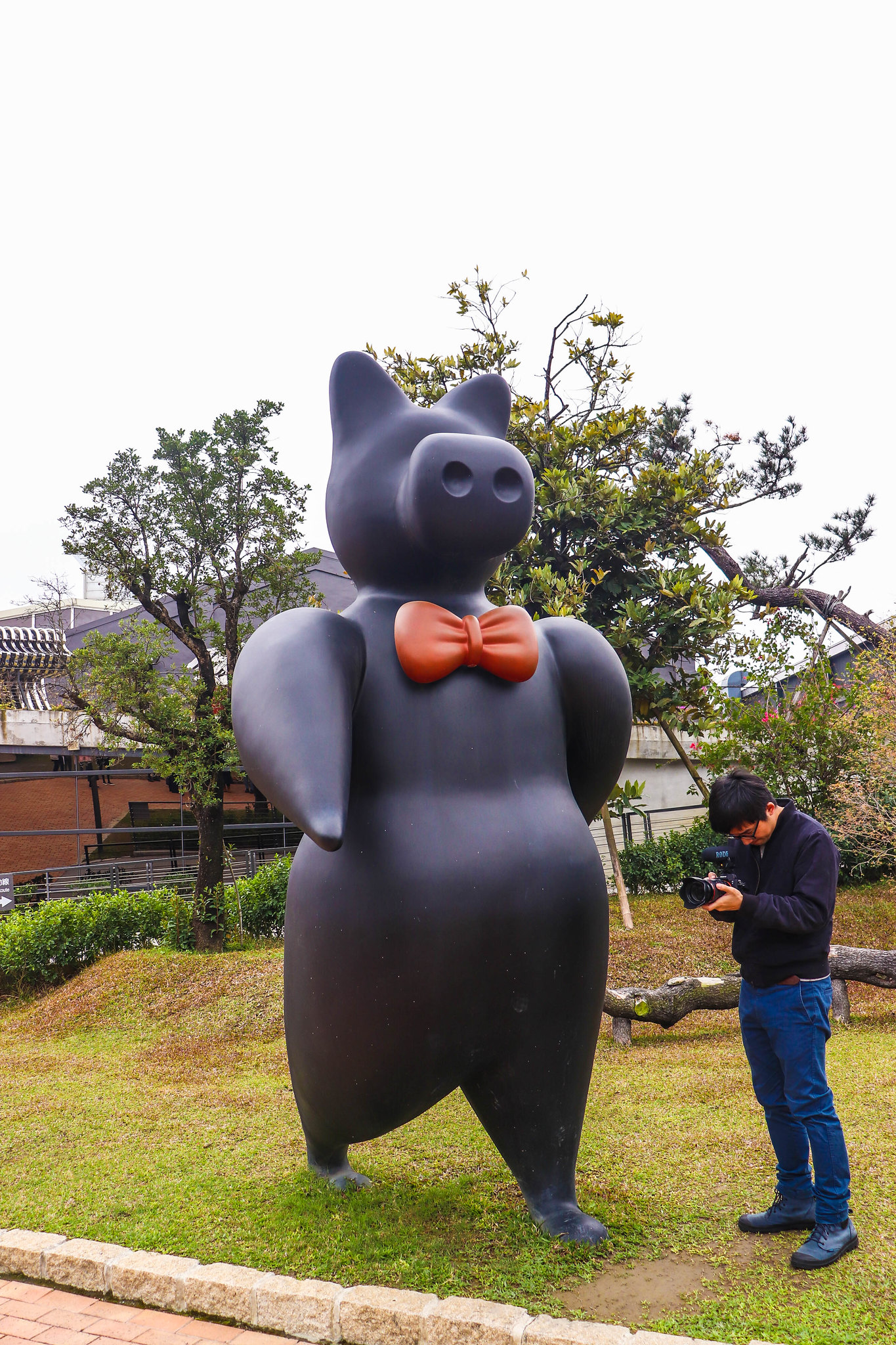
Our first destination in Yunlin County was Nextland (良作工場農業文創館), a meat processing factory and agricultural and creative gallery. Like the true blue Taiwanese, I love their pork such as the ones found in their Guabao or braised pork rice. However, I have gained a greater appreciation for my pork after a visit to Nextland, which is a high-tech cultural-creative enterprise that prides itself on promoting non-traditional cuts of pork and on rearing its hogs in humane and ethical manners.
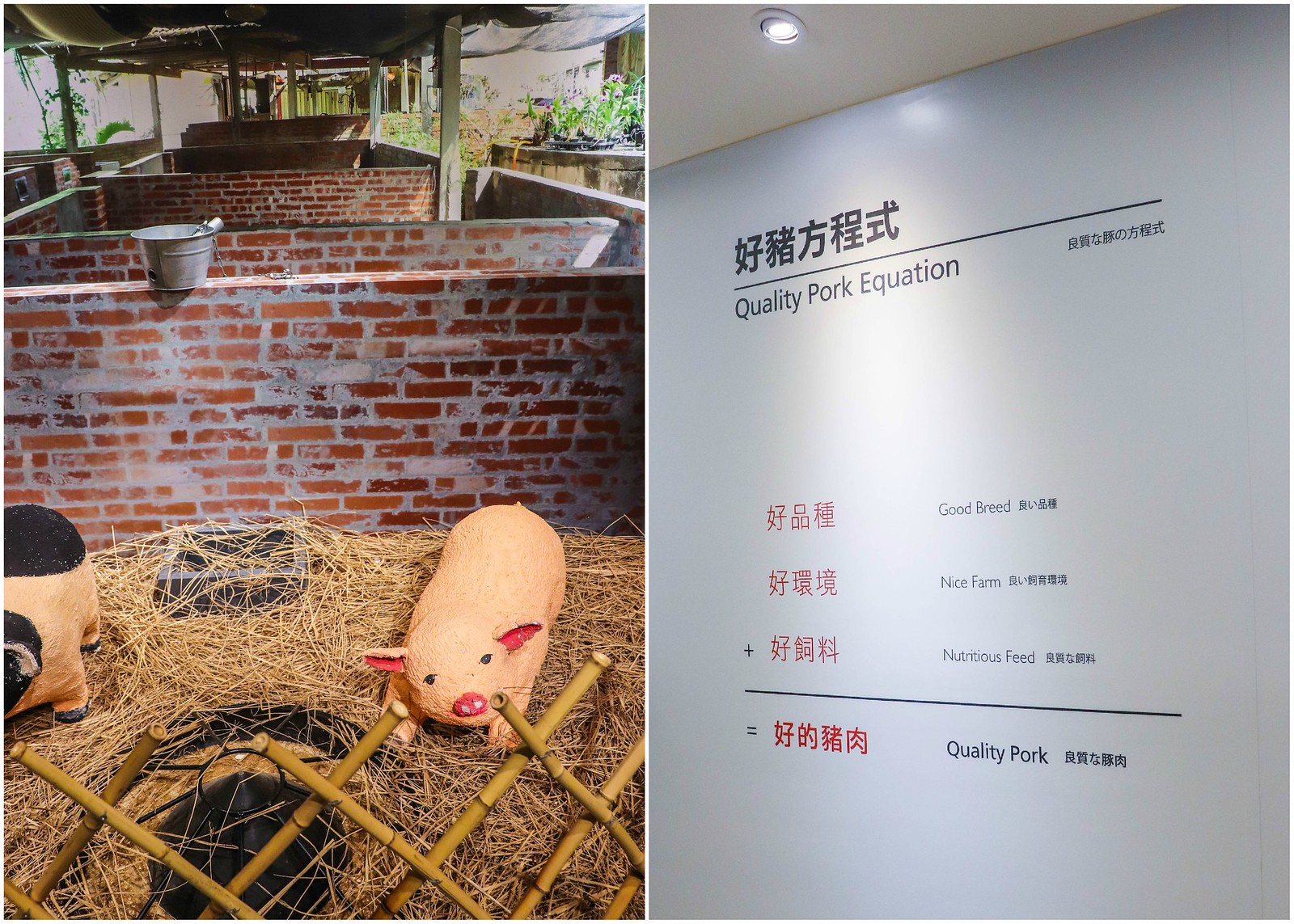
Across Yunlin, many pigs are raised with tender loving care. Besides being fed quality grains, the pigs enjoy listening to Mozart as well. At one of the brands “Choice Pig”(究好豬), the pigs live on a healthy diet which, surprisingly, consists of yoghurt. Every pig here is also given a personal space to exercise and also toys to play with.


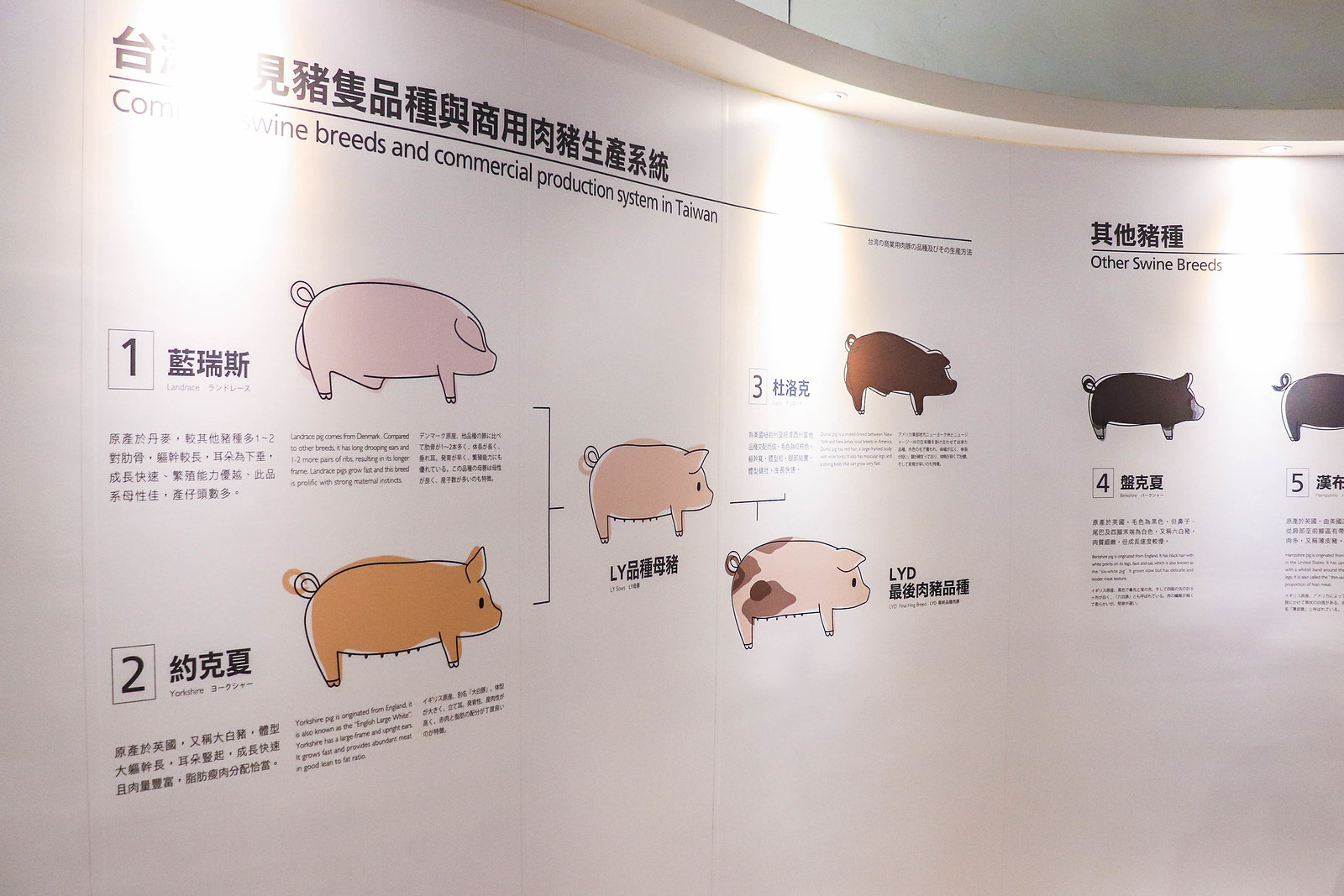
At the cutting edge of modern farming techniques, Nextland integrates interactive farming and food education, showcasing the innovative future of Taiwanese agriculture. We witnessed the cradle-to-grave experience of Choice Pig, the different breeds of pigs available, the various uses of a pig as well as its cultural significance in the art scene.
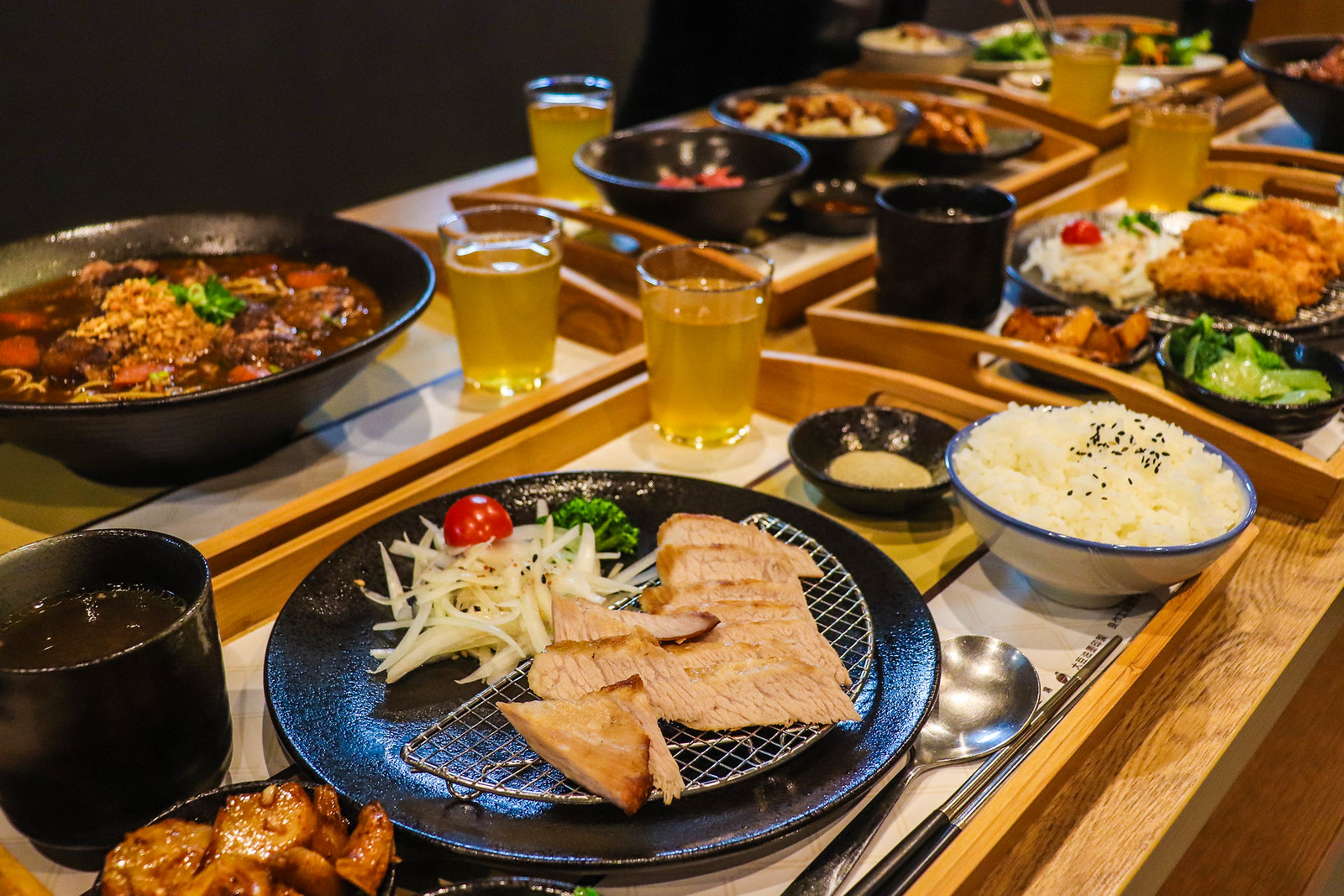
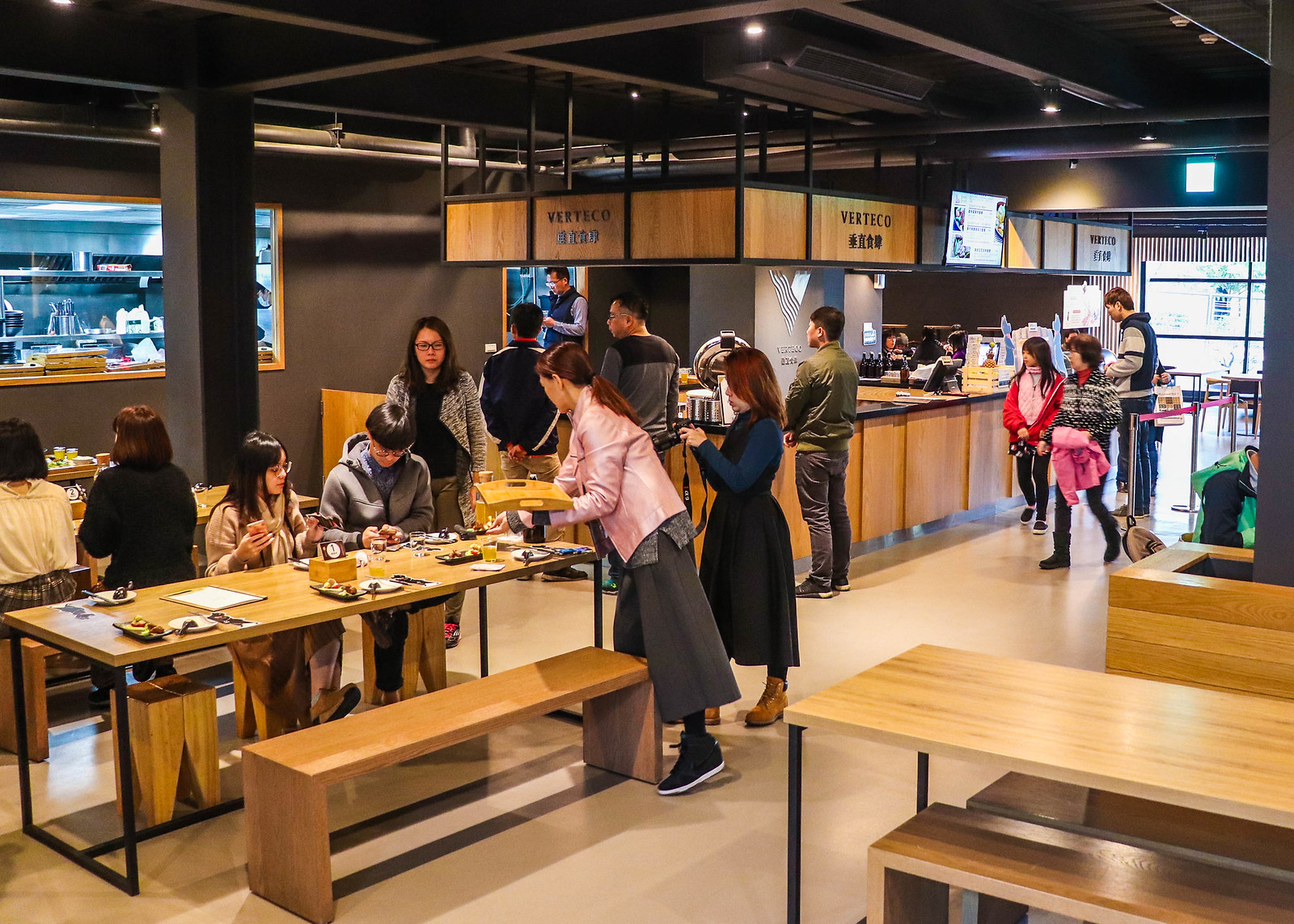
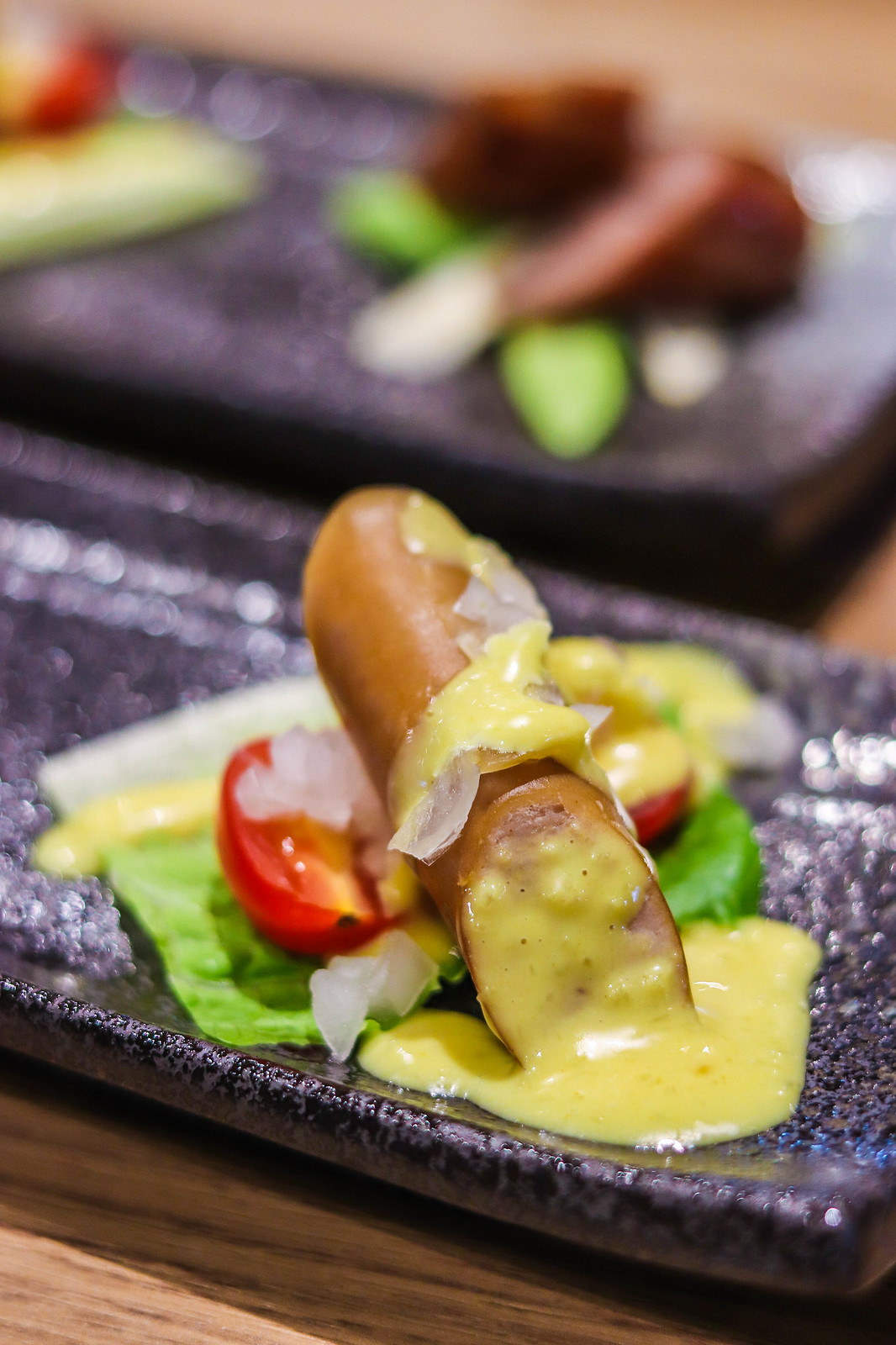
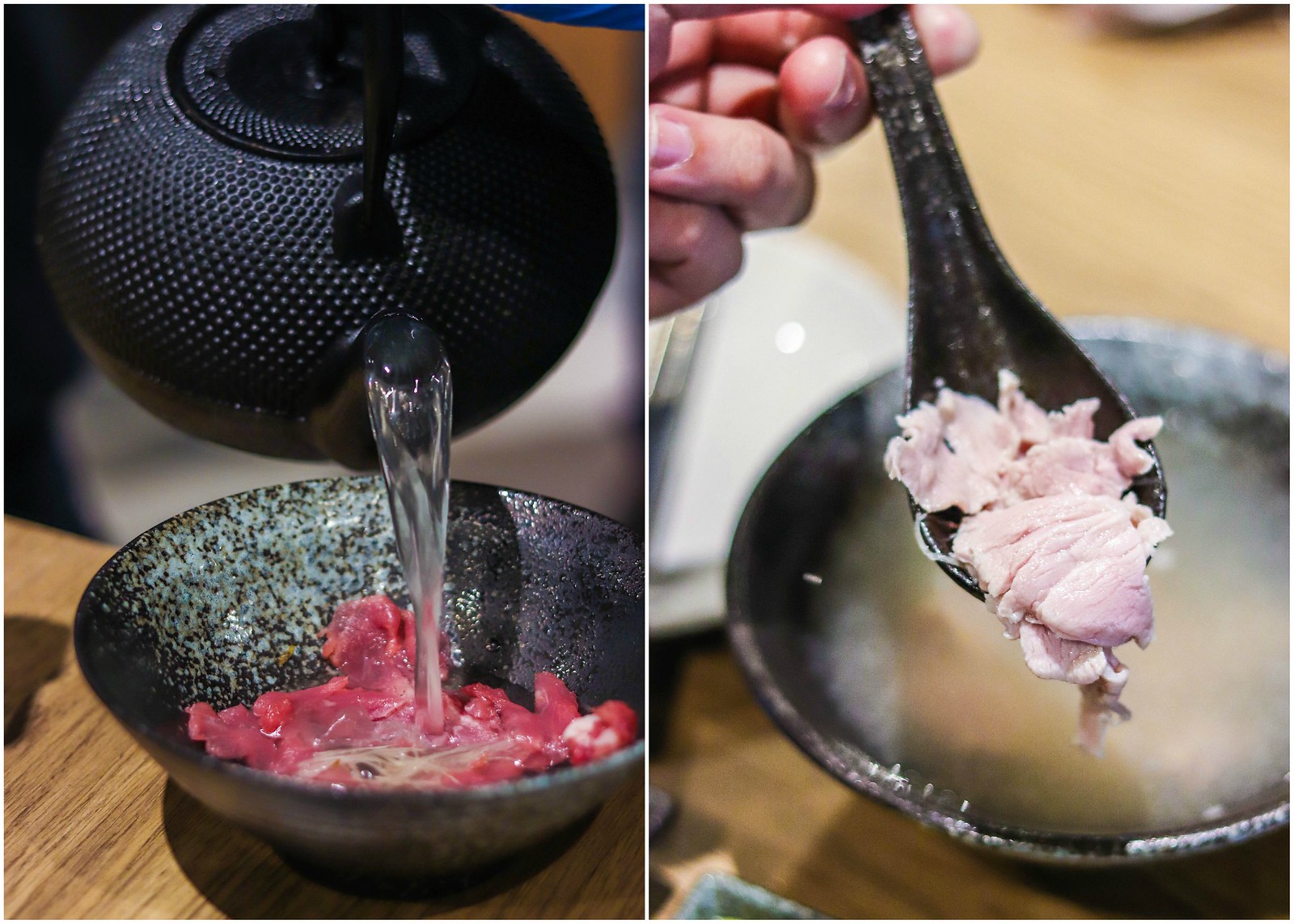
The experience ends with a meal at Nextland’s very own restaurant, which uses Choice Pig as the main ingredient for all their meals. For starters, we had a serving of 58% Kinmen Kaoliang Liquor Taiwan Sausage & Frankfurter Sausage. Next, the Fresh Pork Tenderloin is quick-cooked on the spot using a hot broth to achieve a tender texture that accompanies a delicate flavour.
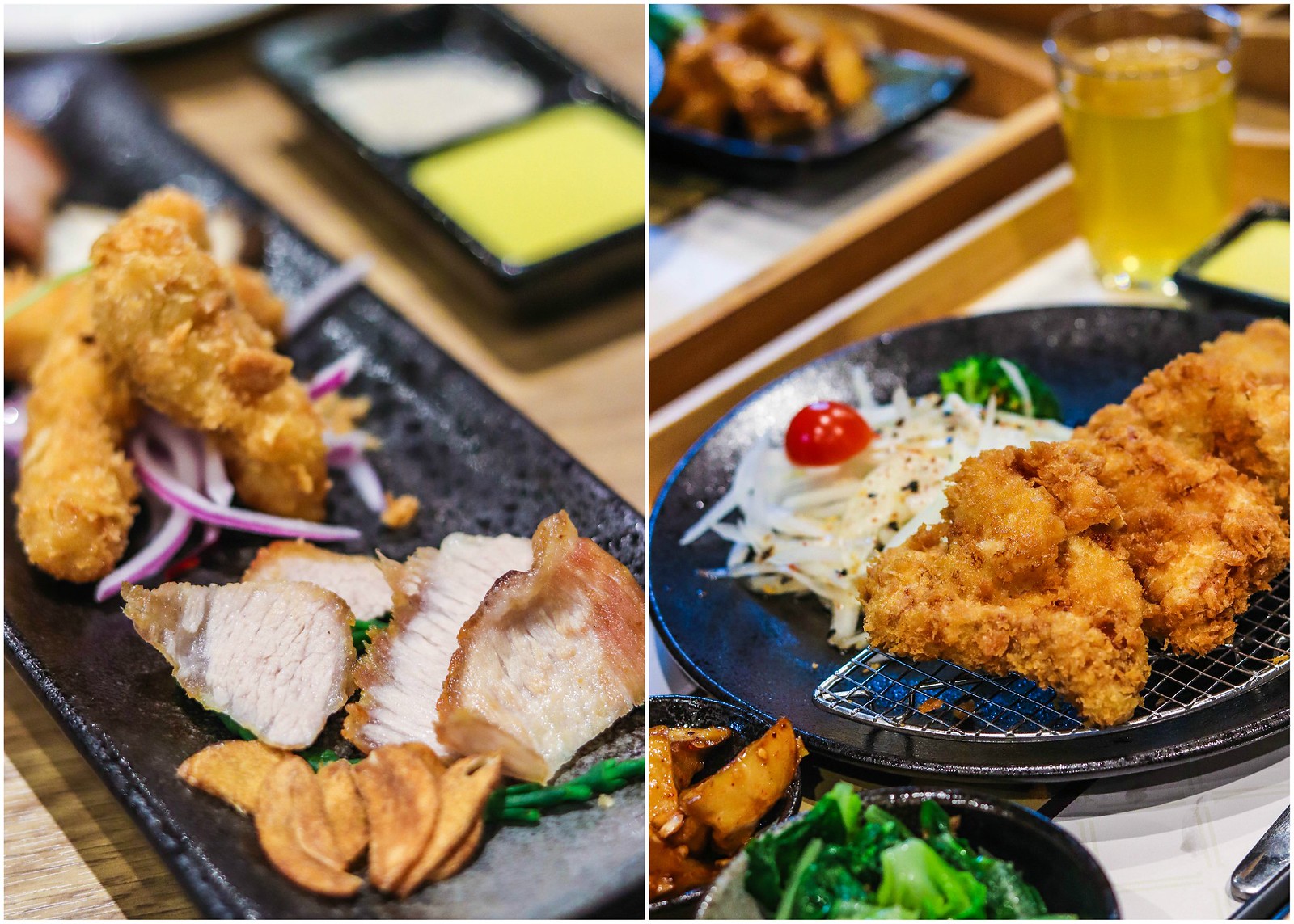
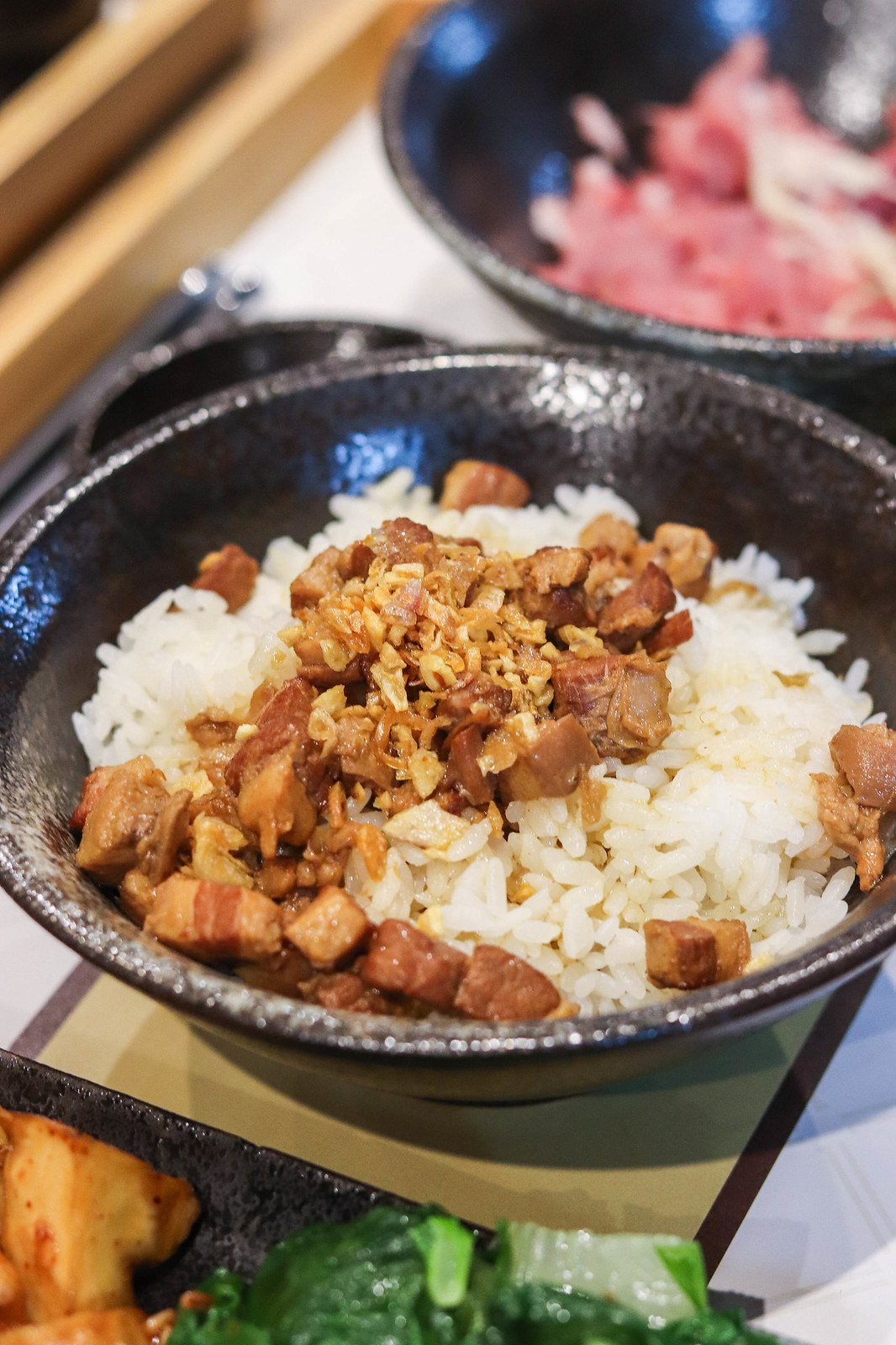
I recommend the signature trio of pork delicacies – including the Confit Pork Belly, Grilled Pork Neck and Deep-fried Loin Strip to savour the various types of pork. Finally, we end off with a serving of Pork Knuckle and my personal favourite, Braised Pork Rice. Using pork as a vehicle for public education on farming, food and nutrition, Nextland is the next go-to hotspot for tourist and locals alike in Yunlin County.
Nextland
Facebook: https://www.facebook.com/nicenextland
YUNLIN COUNTY: JIEFA TEA SHOP

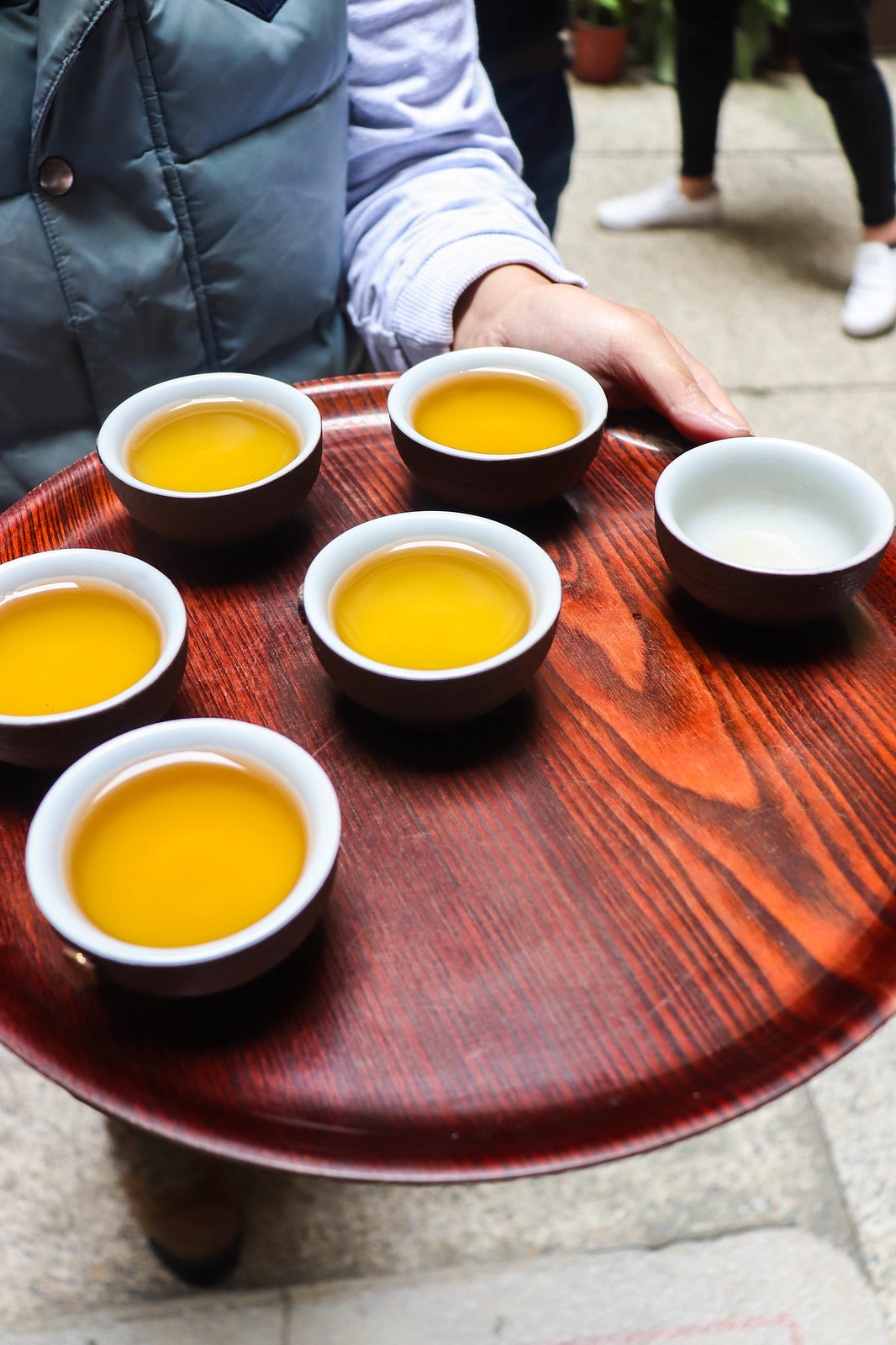
Yanping Old Street remains one of Xilou’s oldest commercial area. Once a bustling trading centre, this small town is rich in culture, humanities and landscapes which are left from the it’s former prosperous era. There are also a myriad of mouth watering local snacks to savour on when you visit.
We were privileged to visit one of the historical structures here in Xiluo. The Luoyang Culture and Education Foundation gave us an enthusiastic welcome, ushering us into the now-defunct Jiefa tea shop. Interestingly, it’s baroque architectures from the Japanese colonial era period endured. Here, the Lou Young Education Foundation uses Jiefa as a culture gallery to promote to us it’s rich culture and history.
YUNLIN COUNTY: TAIWAN YUNG FUNG RICE SHOP
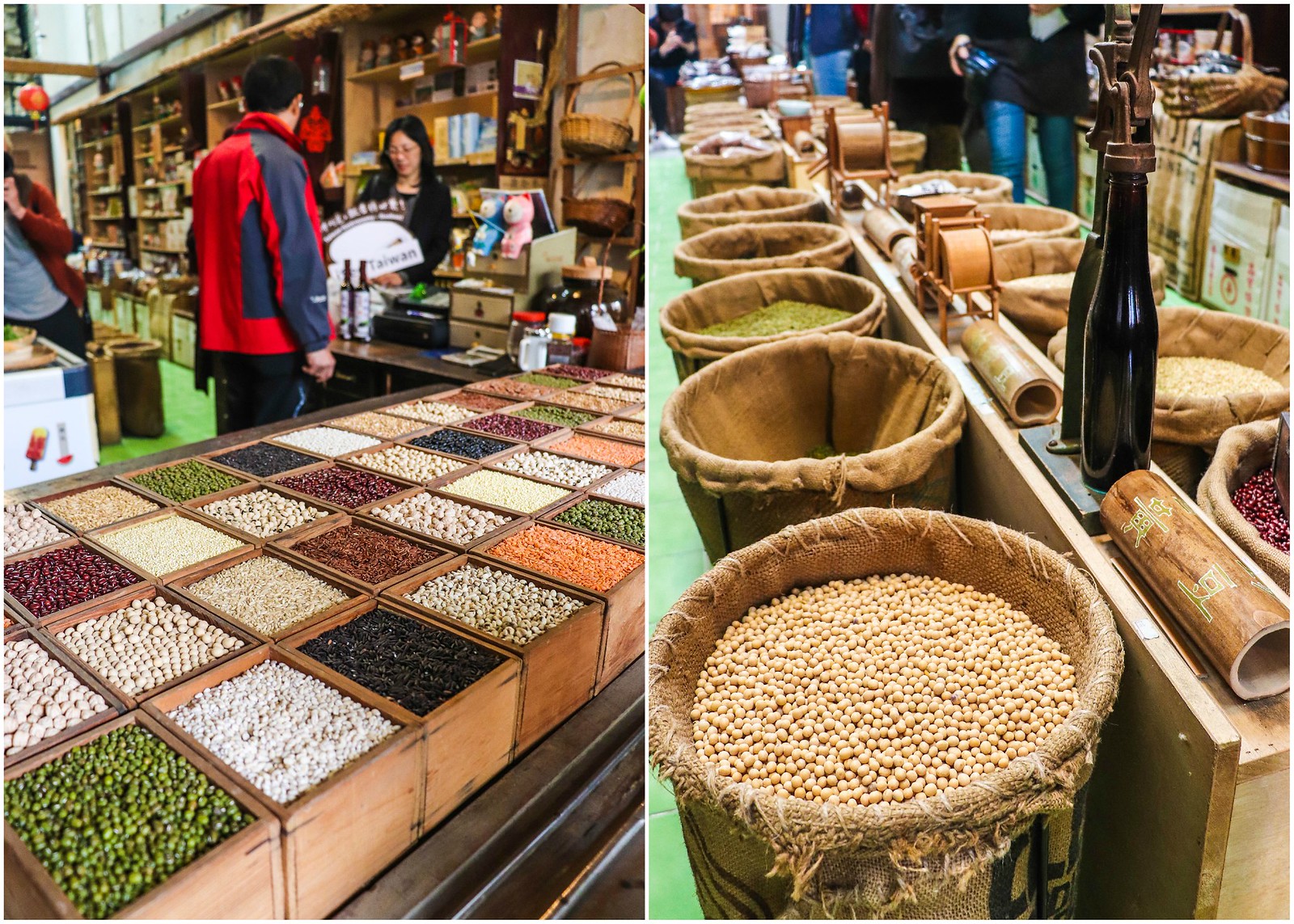
Is that the end to the making of a Guabao? Definitely not! Accompanying the fatty pork in the braised pork belly are various greens which are all freshly produced in this part of Taiwan. iSee Taiwan Foundation brought us to Yung Fung Rice Shop (台湾永丰米粮行), one of the retailers carrying fresh produce that is grown and supplied by local farmers. An artfully created mosaic-like set of wooden boxes, each filled with coloured grains and beans, greeted us when we stepped into the shop.
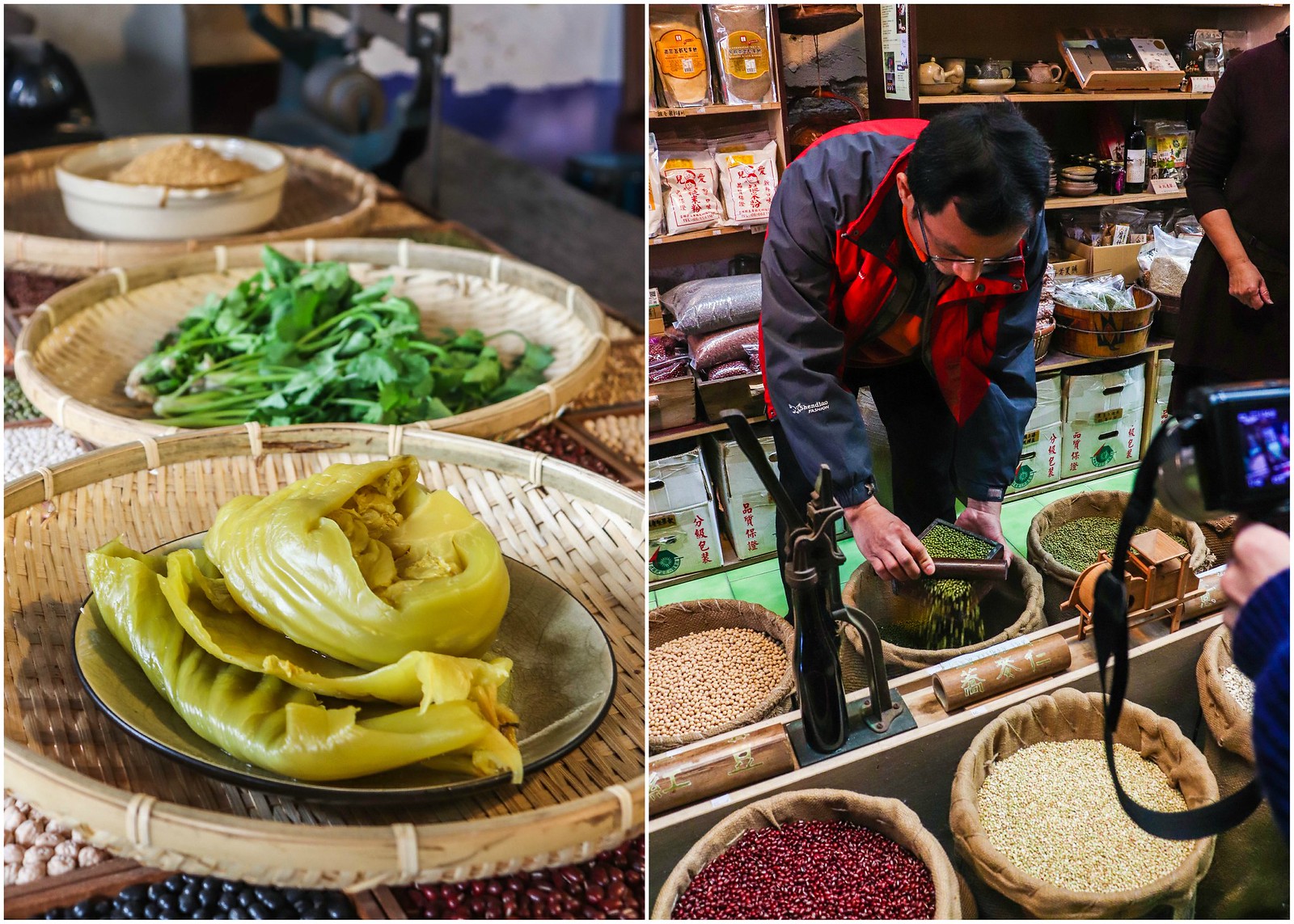
Yung Fung is a faithful replica of a traditional grain merchant’s shop which is housed in a merchant’s building that dates back to 1941! Fun fact: the shop was the area’s only dedicated retailer of imported ware and household goods when it first opened nearly 80 years ago. After World War II, the business went bust but not without leaving the Japanese name for the shop – ‘Rinkogoshauko’ – which still remains firmly affixed to the 2nd floor balcony. Apart from Guabao ingredients, a variety of beans, such as adzuki, mung beans, and Taiwanese traditional and nostalgic items which include woven bamboo baskets and old-style rotary phones are sold here in Yung Fung. Visit Yung Fung Rice Shop to brighten your visit with nostalgia, and the good old things of the past.
YUNLIN COUNTY: WUAN CHUANG SOY SAUCE TOURISM FACTORY

This Xiluo family business has been turning out traditional black soya bean soy sauce for over 100 years. What contributes to the deep, savory flavour of the braise for the pork in the Guabao is premium soy sauce, and what would be more fitting than Wuan Chuang’s century-old soy sauce recipe which is well recognized across Taiwan for exceptional soy sauce.

We were honoured to pay a visit to Wuan Chuang Soy Sauce Tourism Factory (丸莊醬油) in Yunlin County. We first entered what appears to be a restored historic production facility, and was subsequently introduced to the soy sauce production processes in words, pictures and machinery displays. High quality water and climate are essential to yield good soy sauce. What amazes me is that the water used in Xiluo is actually water sourced from the Jhuoshuei River which flows from the Central Mountains. Combined with Yunlin’s naturally warm and humid climate, it’s no wonder Xiluo would be the ideal place for bean koji.
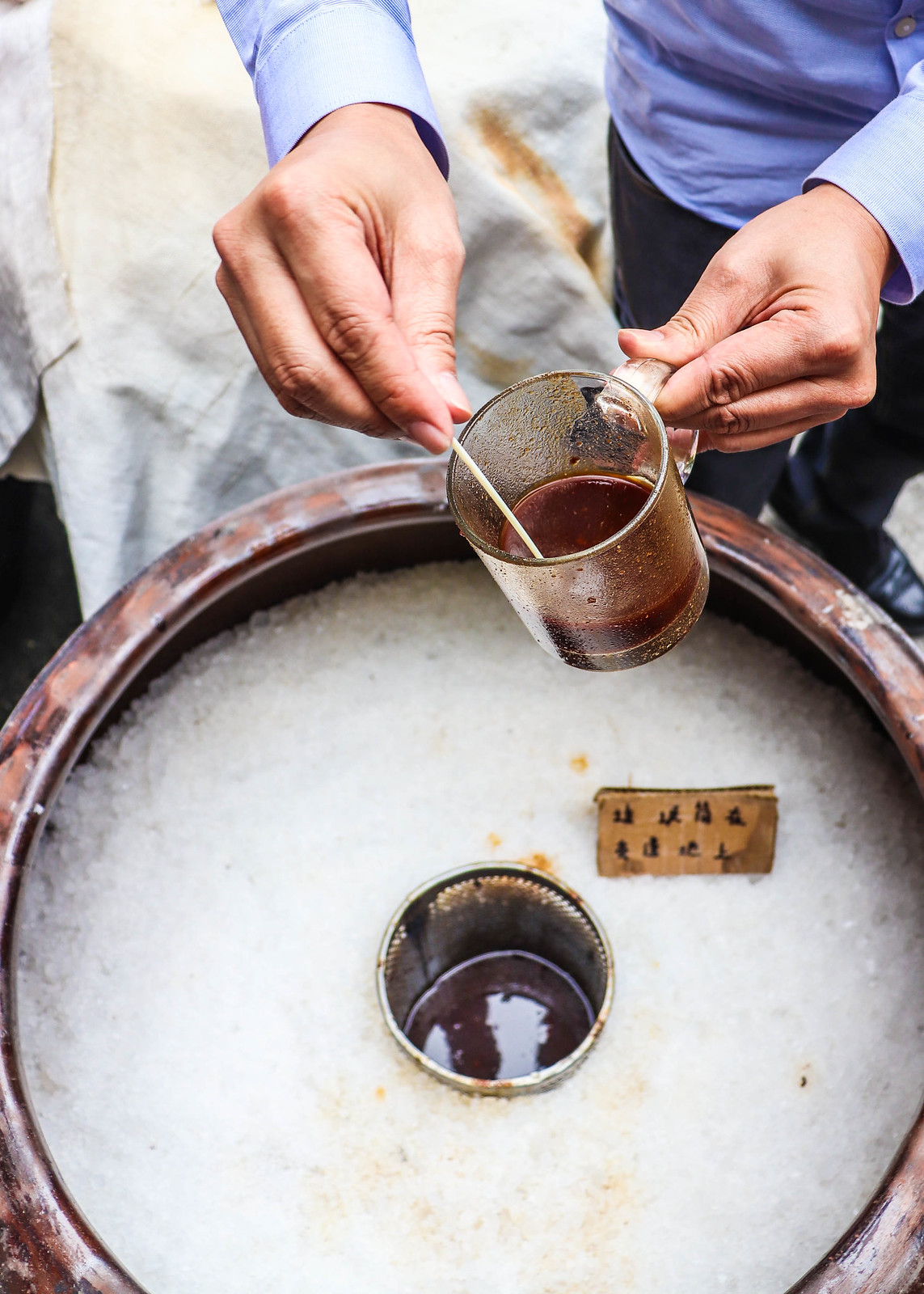
Beyond the soy sauce gallery lies an actual fermenting yard where ceramic urns packed with black soya beans and capped with coarse salt bask in the sun for 180 days, creating delicious soy sauce that is worthy of the Wuan Chuang label.
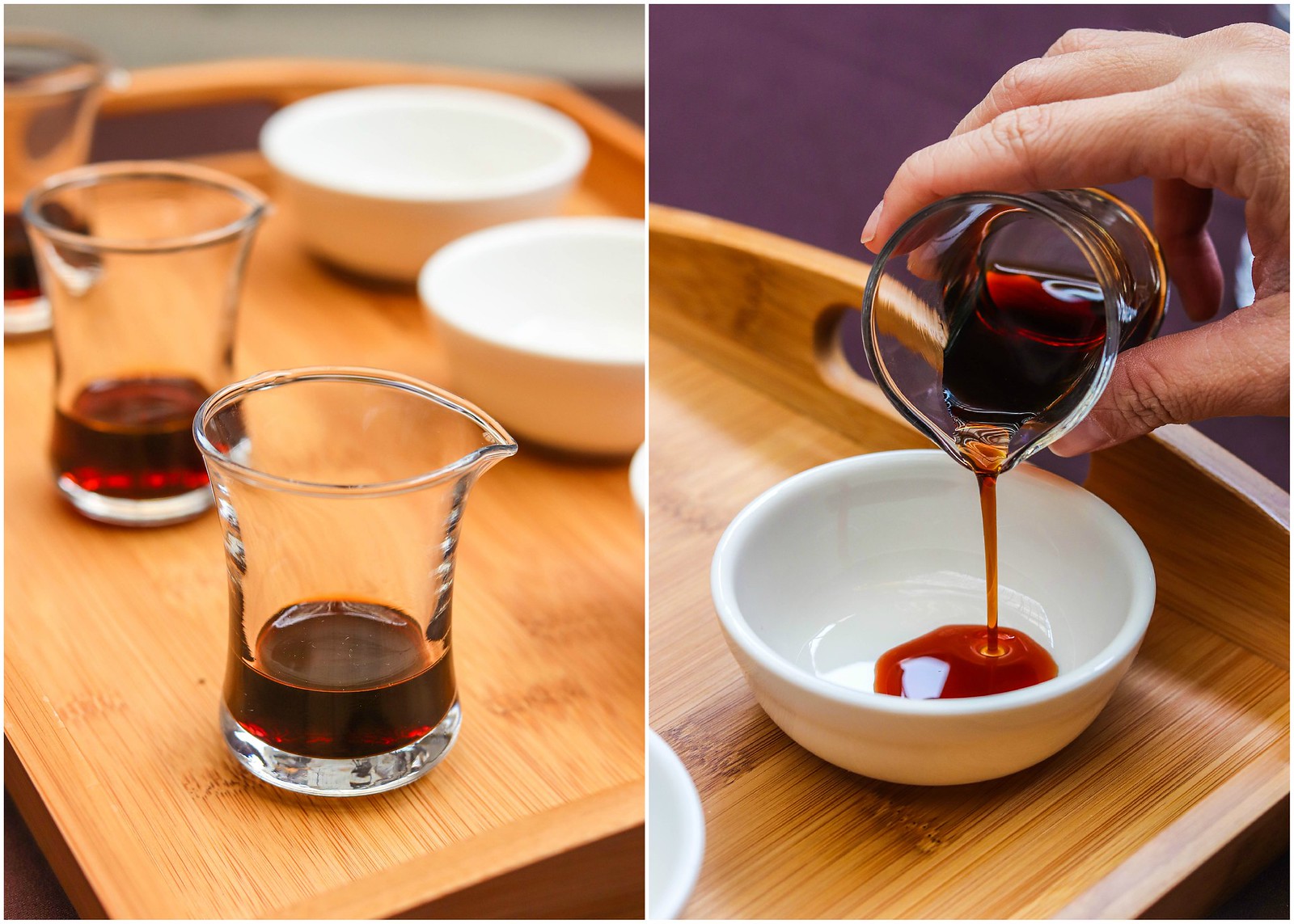
The tour ended with an interesting tasting of the different types of soy sauce. While the flavour of the commercially produced soy sauce is sweeter and lighter, the Wuan Chuang’s soy sauce has a flavour that is more full-bodied. Remember to purchase a bottle of soy sauce or two on your way out!
Wuan Chuang Soy Sauce Tourism Factory
Website: www.wuanchuang.com
ENDING THE TOUR WITH A GASTRONOMIC GUOBAO DINNER
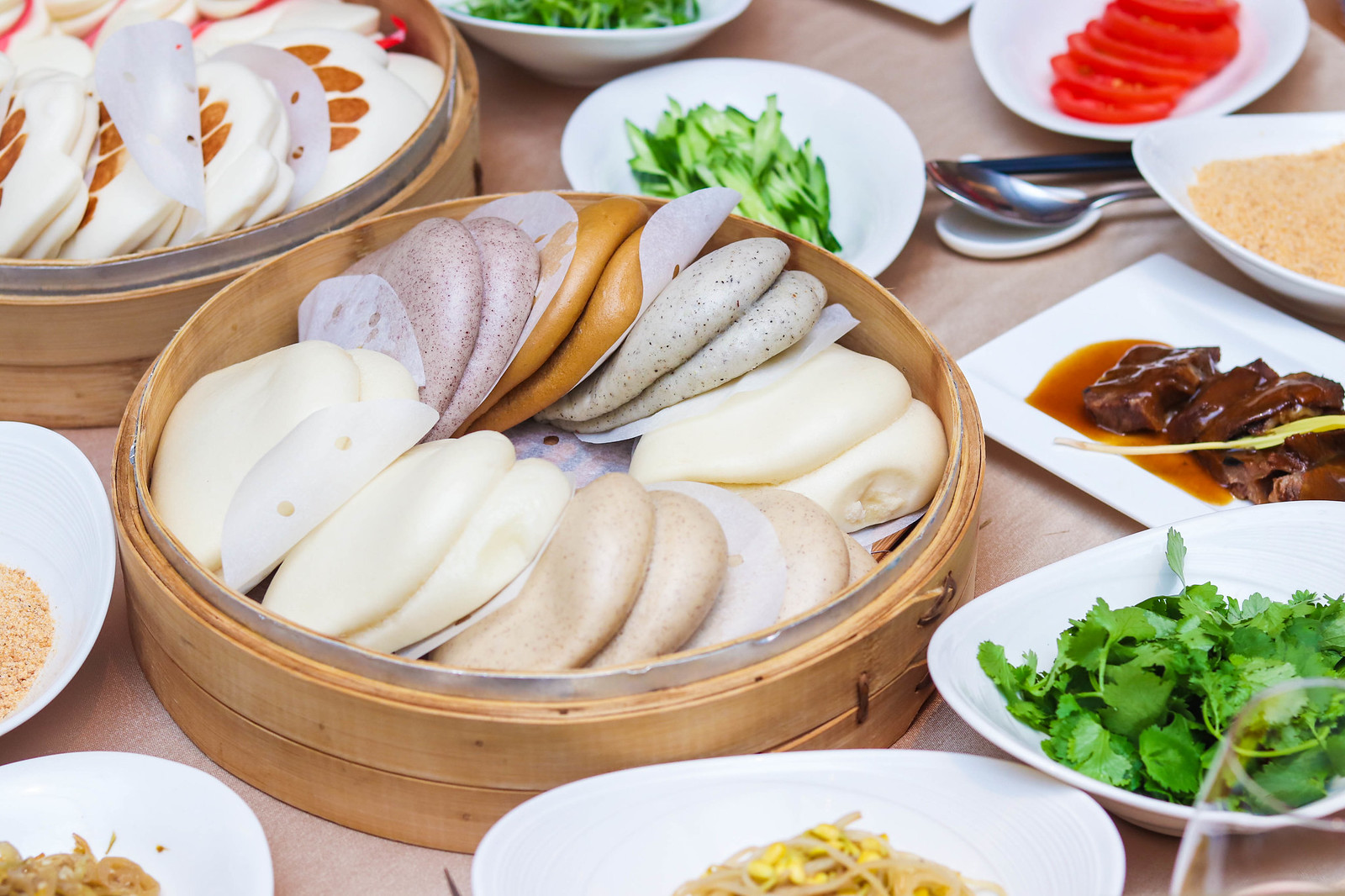
After embarking on a riveting day tour, iSee Taiwan Foundation ends the tour with a Taiwanese gastronomy dinner. According to Chinese tradition, especially in Taiwan, the 16th on the last lunar month is known as Weiya, which is the religious festival for Tu Di Gong (the Earth God). To commemorate the festival, most companies in Taiwan will hold a banquet to show their appreciation for the hard work of its employees throughout the year. Likewise, iSee Taiwan Foundation has prepared a weiya feast where the guabao will be included as the centrepiece for blessing, for fortune in the coming year and the end of misfortune of the previous year.
In 2017, iSee Taiwan Foundation launched a public call for essays, images and videos clips sharing emotive stories of Taiwan’s beloved Guabao as part of the Taiwan Guabao Story Competition. Therefore, this dinner is also dedicated to 10 selected entrants who have amazed the judges with their rendition of the tale of Guabao (For more information, please visit https://www.facebook.com/iSeeTaiwanDiscovery/ ).
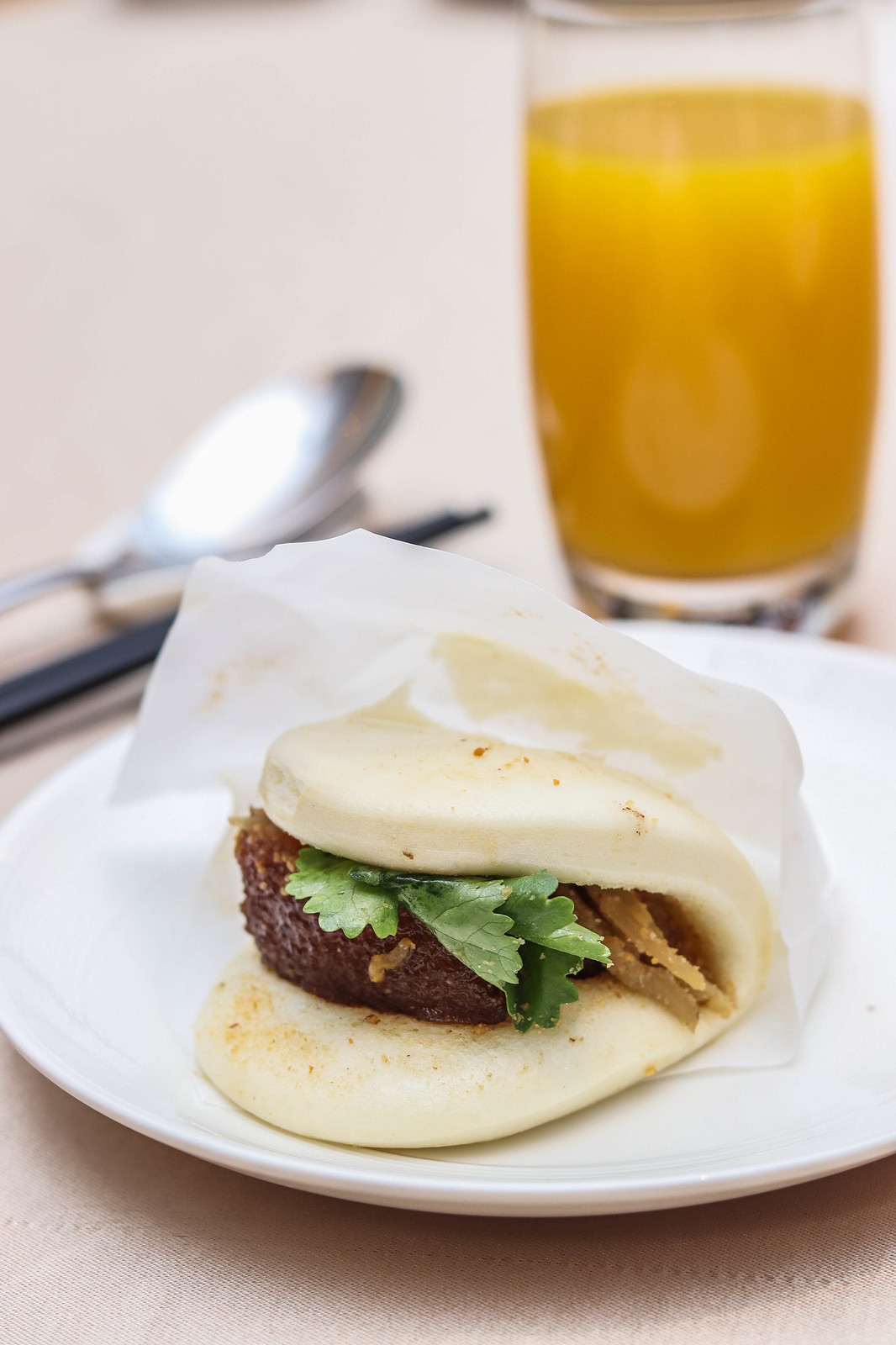
The dinner commenced with two starters, including the Penghu Lobster with Taipei Organic Vegetables and Chrysanthemum Tofu Chicken Soup which make for an amazing combination with the various guabaos that arrived shortly after. Served as a prelude to the modern-day interpretation of braised pork bun is the traditional guabao, which features a “U”-shaped steamed bun filled with a generous portion of marinated fatty pork, pickled vegetables, grated peanuts and fresh coriander. Throughout the tour, we learned that the appearance of guabao is likened to that of a tiger’s mouth wrapped around a tasty slab of pork, thus giving the guabao the nickname ‘Tiger Bites Pig'(虎咬猪). Beyond it’s name, ‘tiger bites pig’ actually signifies eating and holding on to luck, so eat it hot as soon as it arrives in your hands!
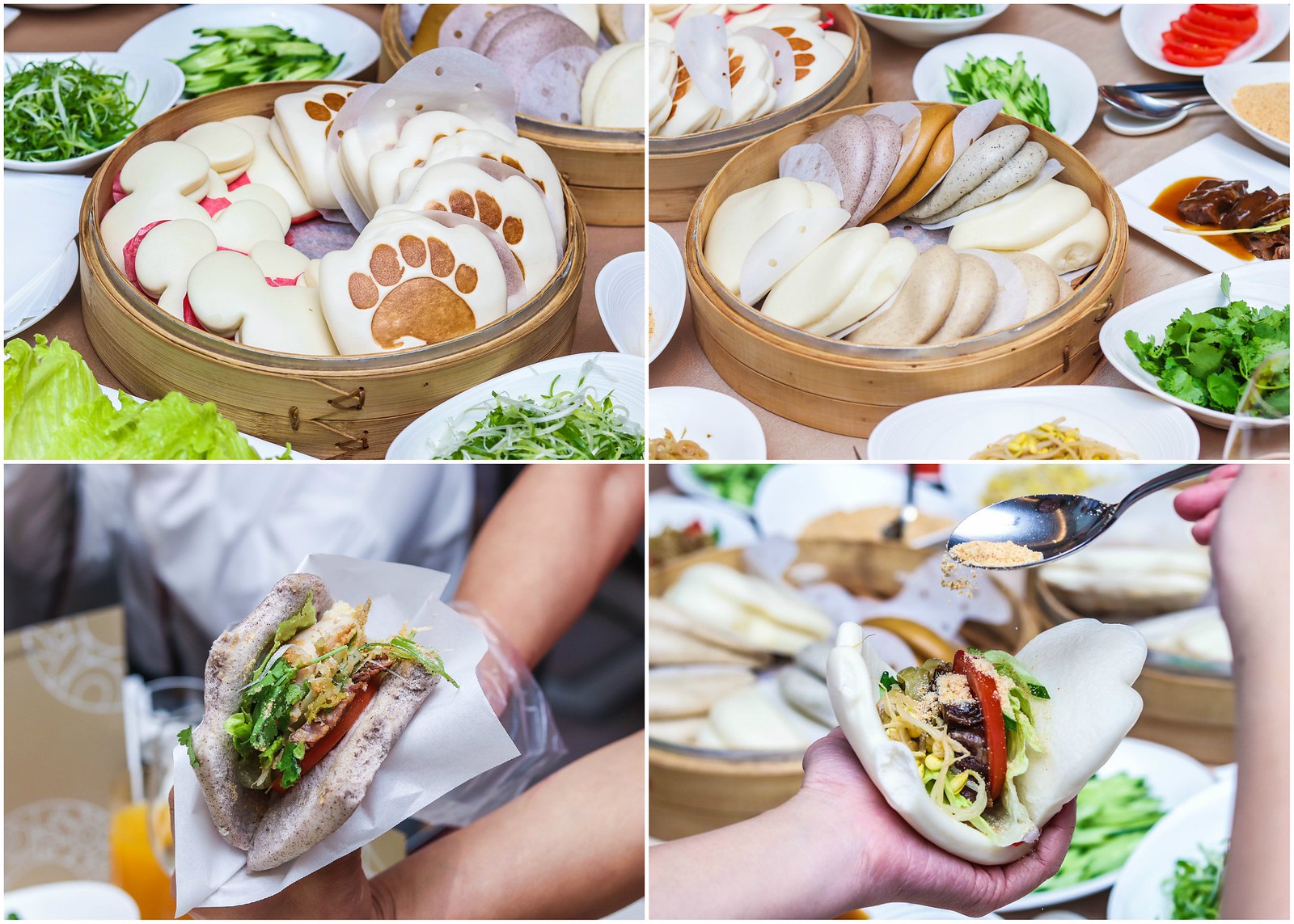
The star of the dinner is definitely the creative rendition of the do-it-yourself savory steamed pocket sandwich. Steamed buns of colors and shapes were presented, along with numerous ingredients such as Tainan Sourced Beef, Taitung Mountain Chicken as well as a couple of greens. There’s even a bun with the bear paw imprint, so cute!
Through making a couple of DIY guabao, my favourite combination has to be soft steamed bun with baw bear imprint filled with Kavalan pork and Yilan Cherry Valley Duck as well as a spoonful of beansprouts, cucumbers and tomatoes. The iSee Taiwan Foundation has emphasized time and again the importance of 色香味俱全 in Taiwanese cuisine, which means to achieve a harmony of colour, flavour and aroma in one dish. Just DIY-ing the guabao alone has helped me better incorporate the concept of 色香味俱全 into the sandwich with just the ingredients alone.
The dinner experience concludes with a taste of some of Taiwan’s definitive classics, including the Alishan Aiyu, Sweet Sesame and Peanut Tangyuan as well as cut fruits which made the night nothing but perfect for us.

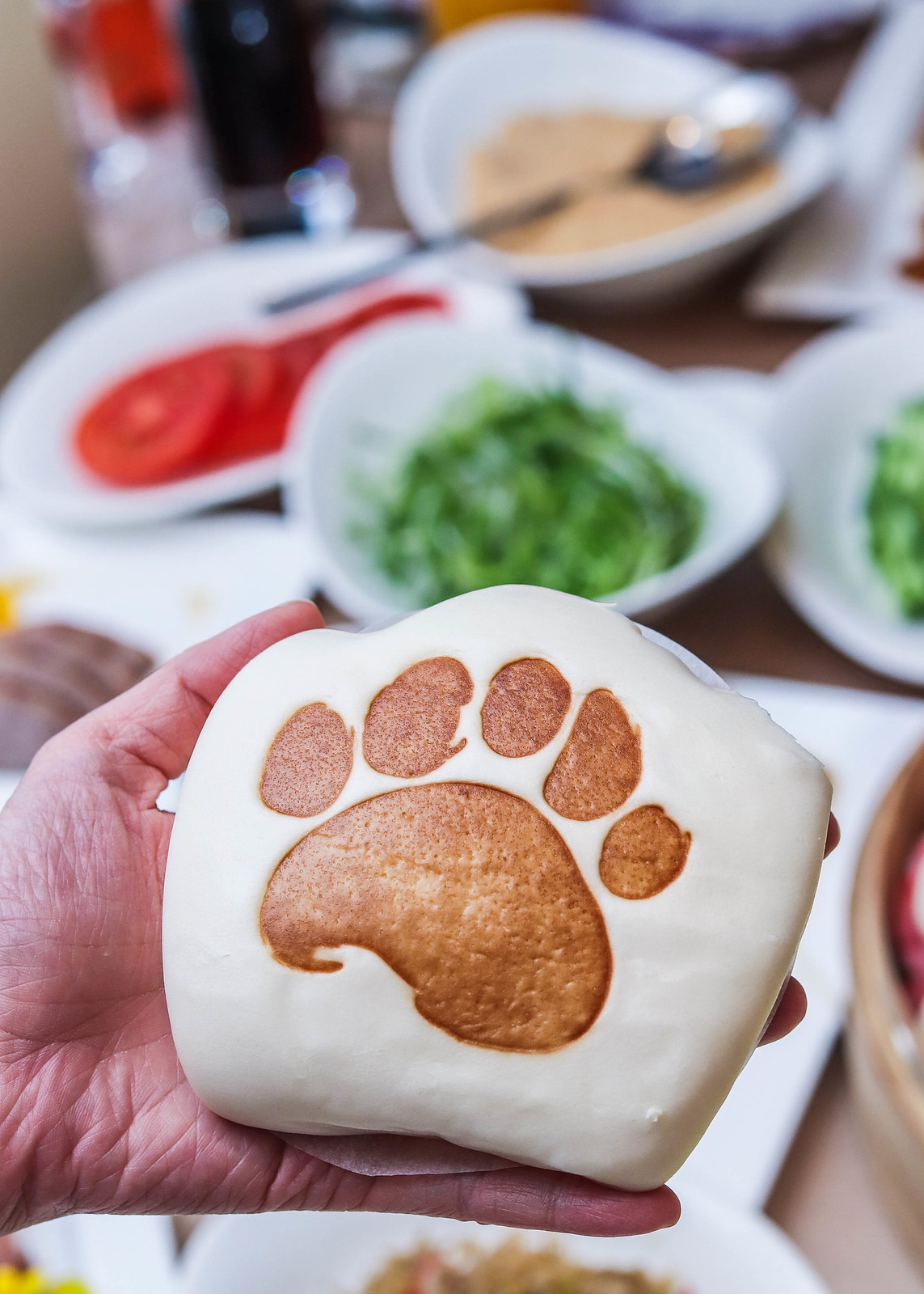
The Guabao expedition organized by iSee Taiwan Foundation has been nothing short of stellar. Through the simple Taiwanese fare of guabao, I am given greater insight into the unique and rich cultural heritage of Taiwan. Beyond just the usual night markets or touristy areas, the cultural activities have really shown me a sight of Taiwan that I have yet to witnessed despite having been there for more than 6 times. I especially recommend Nextland and the Wuan Chuang Soy Sauce Factory if you want to experience a unique side of Taiwan.
iSee Taiwan Foundation
This post was brought to you by iSee Taiwan Foundation.



